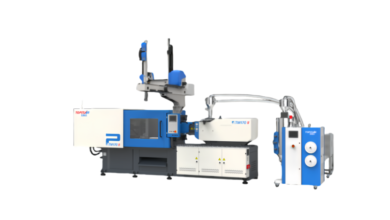How to Train Staff to Use Walk-Behind Paint Sprayers Efficiently

Training staff to handle a walk-behind paint sprayer properly is essential for maintaining line precision, minimizing errors, and increasing productivity. While these machines are designed for user-friendliness, effective operation still requires structured instruction. Without the right foundation, even the most advanced sprayer can deliver inconsistent results.
Ensuring staff are trained on movement, machine control, surface prep, and maintenance allows them to apply lines cleanly and confidently across various surfaces, whether on sports fields, pavement, or industrial zones.
Equipment Familiarization and Hands-On Practice
The first step in training is to walk staff through the sprayer’s controls. Operators should understand how to adjust spray pressure, align the nozzle, and manage paint flow. Practical demonstrations followed by individual practice sessions help build familiarity with balance, weight, and handling.
Supervisors should also explain safety measures, such as maintaining distance from live lines and using proper footwear to avoid slipping during operation. With hands-on repetition, team members begin to develop muscle memory and gain confidence in managing different conditions.
See also: Multicam Editing: Techniques and Best Practices
Calibration and Ground Awareness
Once the mechanical aspects are understood, staff must be trained in calibrating the sprayer based on project needs. This includes adjusting for surface types, humidity, and paint consistency. Test runs are especially useful when teaching operators how to match output to field layout and stripe width.
Proper surface assessment is equally important. Uneven ground, wet spots, or dusty areas can interfere with adhesion. Knowing how to spot and address these issues ensures consistent results. This phase of training also presents a good opportunity to educate teams on how walk-behind paint sprayers are an ideal choice for field marking, offering mobility and accuracy for diverse job types.
Movement Control and Application Technique
Instructors should place strong emphasis on walking speed and hand control. Uneven pace can result in crooked lines or paint splatter. Operators should practice walking in a straight line using visible field markers as alignment guides.
Body positioning and turning technique also affect output. Training should include strategies for navigating curves or tight spaces without overlapping or breaking the line pattern. Line thickness adjustments should be reviewed to match job specifications, especially when using high-visibility coatings or marking on textured surfaces.
Post-Use Maintenance and Equipment Longevity
No training is complete without guidance on cleaning and storing the equipment. Paint residue can clog nozzles, reduce spray quality, and damage internal parts over time. Staff should be shown how to flush the system properly and check for component wear after each use.
Incorporating tips on why walk-behind paint sprayer upkeep matters reinforces the connection between maintenance and consistent performance. Well-maintained machines deliver cleaner lines, experience fewer breakdowns, and require less costly repair.
Conclusion
An efficient training program combines technical knowledge, surface awareness, and operational discipline. By introducing field crews to proper techniques early on, you ensure that every walk-behind paint sprayer is used to its full potential, producing sharp, accurate lines with minimal waste.
A well-trained team not only reduces on-site errors but also extends the value of your investment. From setup to cleanup, methodical training supports long-term consistency, safety, and professionalism on every marking project.







